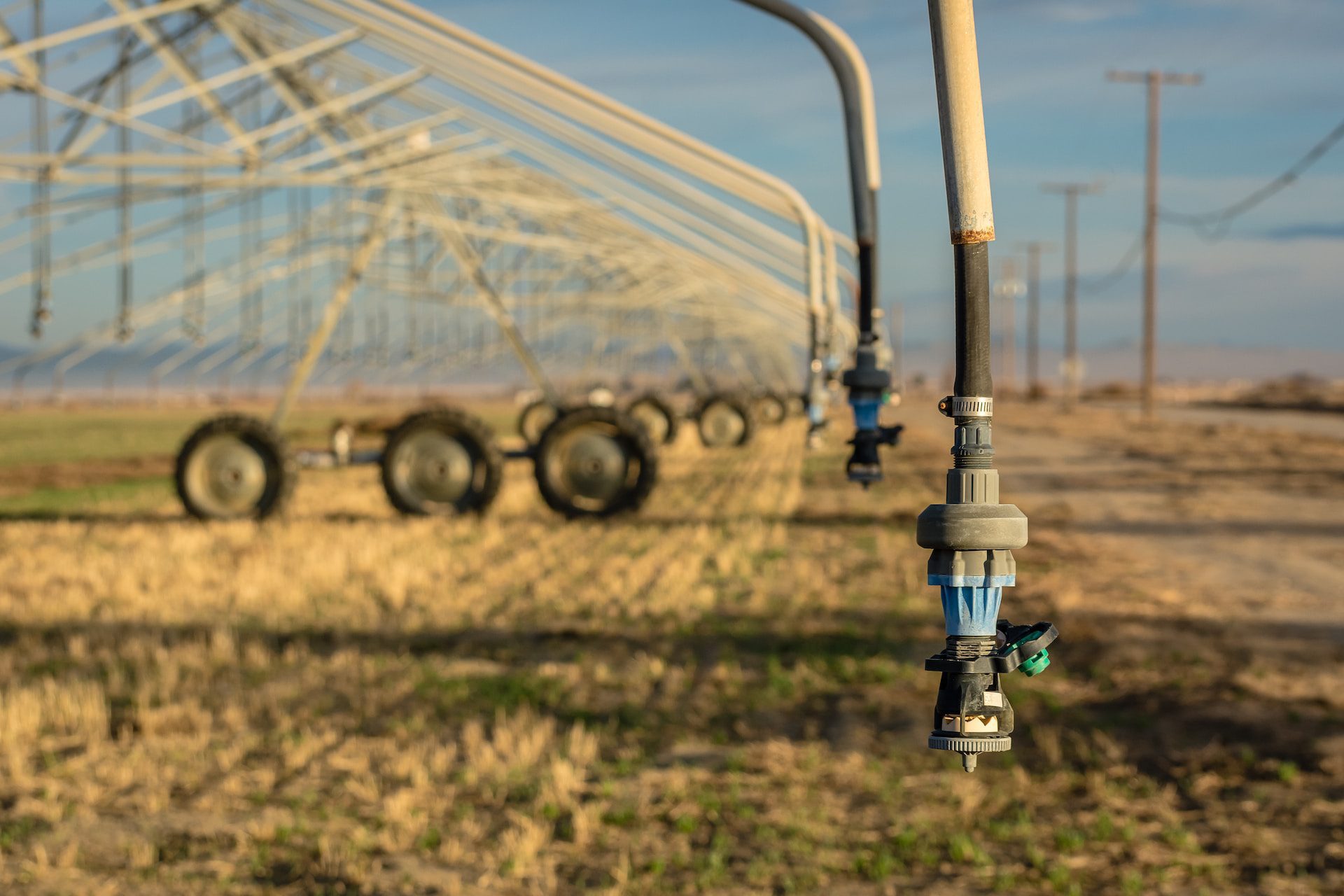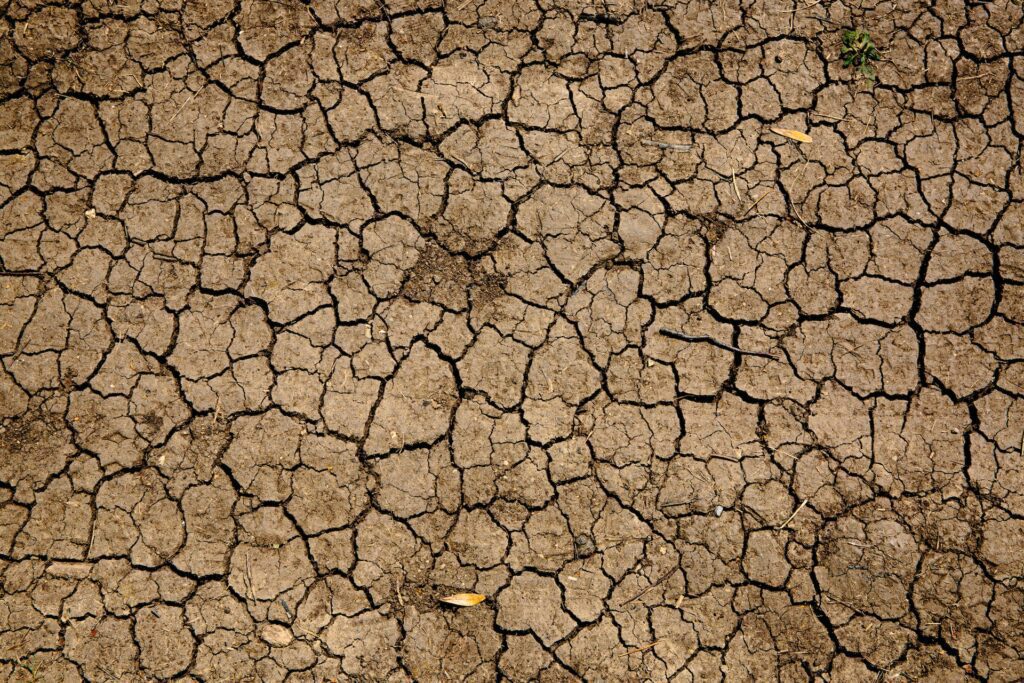04/17/2023 | Environmental | 8 MINUTE READ
Dry Spells Turn Deadly: How Droughts Wreak Havoc on Water Quality

When the temperatures rise and the rain stops falling, drought conditions may develop. Along with a substantial drop in available water supplies, droughts increase the pollutant concentration in the remaining waters. For instance, algae blooms commonly appear in drinking water reservoirs when drought conditions are present.
In this scenario, municipalities are tasked with resolving water supply and water quality issues. When less water is available, contaminants aren’t as easily diluted, which means that water treatment systems must work more to raise the quality of the water before it’s distributed to nearby homes. In the following guide, you’ll learn how droughts impact water quality and what can be done to maintain water supplies during drought conditions.

The Effect of Droughts on Water Quality
When a drought occurs, water quality invariably worsens. The length and severity of the drought determine how much the water quality is impacted. Even though available water supplies drop significantly during a drought, the amount of pollutants that get into the water will remain unaffected. In this scenario, less water volume means that the concentration of pollutants will be higher. An increase in salt, chemical runoff, and minerals is likely.
When there’s less water, it’s also more difficult for the larger compounds to be dissolved, which is another reason why contaminant concentration is higher. Soils that haven’t received as much water will create more runoff as well. When this runoff spreads, it will collect solutes and other types of contaminants that aren’t typically found in water during non-drought conditions. These solutes must then be treated, which isn’t possible depending on the contaminant.
If the concentration of pollutants increases and the water isn’t properly treated, homeowners are more liable to notice strange hues or odors with their water. It’s common for water to be cloudy as a result of suspended minerals, contaminants, and sediments. While some municipalities might tell their residents that the water is safe to drink, others avoid doing so because of the possibility that the contaminants in the water are dangerous.
Another issue that’s common with water quality during droughts is that algae growth often increases, which results in harmful algal blooms as well as worse water quality. Drought waters tend to be considerably warmer than non-drought waters. In these conditions, there are less molecules in the water, which means that less energy is required to change the water’s temperature. The water can also be warmer because droughts tend to take place when the temperatures are abnormally high for extended periods of time.
When the temperatures are high, certain algae species will grow at a faster rate. There are also various bacteria that grow during warm water temperatures. The reason why algal blooms are dangerous is because they typically produce highly toxic compounds that are stubborn and will remain in the soil and water supplies even after drought conditions have dissipated. This issue can be worsened when agricultural runoff is high, which occurs during flash floods.
Salinity levels could also increase, which makes it more difficult for the water to be effectively treated. If there are too many salts in the water, the taste and smell could be negatively impacted. For instance, chloride usually adds a metallic or bitter taste to the water. If you notice an odd smell with your water, consider testing it with a pH sensor before drinking it.
How Droughts Affect Water Supplies
Droughts degrade the quality of water because of the dwindling water supplies. When the water levels in reservoirs and rivers drop, municipalities won’t have access to as much water supplies as usual, which means that water rations and restrictions might apply. Water restrictions differ from region to region and mainly depend on the severity of the drought.
Water restrictions typically involve limitations on specific uses of water, the primary of which include filling up swimming pools, washing cars, irrigating lawns, or washing off pavement areas. These restrictions could place a limit on when water is used or how much water is used. It’s common for water rationing to include a short-term suspension of water supplies until the conditions have returned to normal.
When rations are in place, it becomes possible for water supplies to be distributed in a manner that helps maintain public health and safety. Even though these limitations are effective, they don’t always result in behavioral changes, which means that people may go back to their previous levels of water use once any restrictions have been removed.

Although it doesn’t affect many homeowners, groundwater sources may also be impacted, which could cause wells to run dry. The water level that’s found in a groundwater well naturally varies depending on the time of the year. During the March and April months, groundwater levels are usually high because of spring rainfall and winter snowmelt. When rain and snowmelt move into the groundwater, the water level should increase. However, groundwater levels usually start to fall in the hot summer months.
During the summer months, groundwater recharge is less likely since plants and trees will use whatever water is available to grow. By September and October, groundwater levels are very low and will only begin to rise once temperatures drop and trees no longer use the water. The ebbs and flows of water availability in wells is most notable in shallow wells. While deep wells may be able to get through droughts without issue, shallow wells can dry up quickly and may take longer to fully recover once drought conditions are no longer present.
Droughts also affect water supplies with agriculture and industrial facilities. For instance, agricultural users tend to rely on groundwater, which can lead to problems if groundwater supplies drop and the available groundwater is contaminated. Pumping water during a drought can also result in saltwater intrusion. Any industry that relies on water to perform standard operations may be tasked with implementing extensive treatments to ensure the water is up to the necessary quality.
The Impact of Droughts on Water Systems
Along with water supplies and water quality, water systems are impacted by droughts. Lower water levels often cause important infrastructure to be damaged, which may lead to soil subsidence and instability. Even if the instability appears to be relatively minor, infrastructure and equipment can be damaged. Even the smallest water systems are expensive to repair.
An increase in demand on water treatment plants also increases the likelihood that equipment will malfunction or fail. This equipment is essential to the continued operation of a water treatment facility. When one of these plants experiences downtime, water is unable to be treated quickly, which will worsen plant efficiency. Even if every piece of equipment in a water treatment plant is properly maintained, a malfunction can occur if the equipment is being used at a far higher rate than it’s capable of.
Water distribution and storage systems may be impacted as well. If too many contaminants are present in the water, scale buildup and other problems might develop. Over time, these problems lead to leaks. Unless a leak is detected and fixed immediately, there could be a substantial loss of water.

How Droughts Exacerbate Water Quality Problems
When water levels begin to drop off, the water that’s found in rivers and reservoirs will become stagnant, which makes it more difficult for contaminants to be properly dissolved. Sediments and nutrients will accumulate in this scenario, which further degrades water quality.
It might also be more challenging to treat the water and remove most of the contaminants. When the water flow drops, water treatment plants are less able to effectively remove contaminants and pollutants. The quantity of contaminants presents problems that water treatment facilities must overcome. Even when less water is available, water demand may still be high, which means that these facilities are tasked with treating water quickly.
Many of the treatment processes use up some of the water supplies, which creates a cycle where water supplies drop to lower levels than anticipated. The solution to this problem involves reusing the water. However, water reuse projects must also contend with an increase in pollutant concentration. Keep in mind that the majority of wastewater treatment facilities don’t have the ability to get rid of high salinity.
Water shortages may lead to a higher use of untreated water sources and private wells, which increases the exposure that people have to contaminants. One particular contaminant that’s regularly found in well water is arsenic.
Conclusion
Droughts can have significant impacts on water supplies, quality, and systems. These impacts become more difficult to manage if the drought lasts for a lengthy period of time. The effects of drought on water quality are often severe, exacerbating existing problems and creating new ones. It’s important to understand these impacts and work to conserve water resources during periods of drought to minimize the effects on water supplies and quality.
Posted by Dominic O'Donnell on April 17, 2023
Sensorex is a global leader in the design and manufacture of quality sensors for water quality and process applications. The company offers more than 2000 sensor packages for pH, ORP, conductivity, dissolved oxygen, free chlorine, chlorine dioxide, UV transmittance and other specialty measurements, as well as a full line of sensor accessories and transmitters. Its expert technical support engineers solve analytical sensor challenges with custom designs and off the shelf products.




